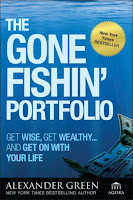The majority of money managers can’t beat the S&P 500 so why would you bother using them? If you prefer self-checkout, online shopping and automating your life, then a robo advisor may be right for you. Robo advisors help automate the investment process by removing emotion from the process and building fully diversified portfolios based on your preferences.
What Are Robo Advisors and How Do They Work?
In an earlier post, I described how science a modern portfolio theory is used to optimize investment strategies by combining assets that correlate very little between each other. Robo advisors, or automated investment services are investment tools that utilize innovative software and computer algorithms to create and manage your portfolio according to the modern portfolio theory.
This latest wealth management advancement begins with a questionnaire to diagnose your investment preferences, risk tolerance and goals. Based upon your answers, the robo advisor will guide you to the appropriate portfolio to purchase. Then the robo advisor will automatically create a diversified investment portfolio and select the funds for you.
Pros and Cons of Using a Robo Advisor
Robo advisors provide many benefits to investors. Their services cost less than other alternatives and make investing a stress-free process. Robo advisors select the underlying investments so you don’t have to spend time performing all of the research. They also take the emotion out of investing and can be set to automatically rebalance your portfolio as market conditions change. Robo advisors are also great for clients who don’t have enough capital to use a stock broker or don’t want to select the individual stocks and bonds for their investment portfolio.While robo advisors offer many advantages, there are some negative factors too. The underlying investments used by a robo advisor, such as mutual funds and ETFs, will have additional fees that can be more expensive than expected. Robo advisors also don’t usually provide access to human advisors, so if you want more personalized service then they aren’t the ideal choice. Investors who want to incorporate social, ethical or religious filters on their investment choices shouldn’t use robo advisors either.
Ideal Customer For Robo Advisors
Using a robo advisor for your portfolio isn’t for everyone. They are ideal for those who want to be hands-off on their investment portfolio and prefer to let others build and manage their money. Someone who has been burned by a stock broker and wants their portfolio to be generated by a computer algorithm is also a great candidate for robo advisory services.Active traders, hands-on investors and those with complex financial situations are not necessarily good candidates for robo advisors. Also, robo advisors can make it less obvious what you are investing in. Before investing through robo advisors, make sure you understand the assets the robo advisors invest in.
Other Robo Advisor Considerations
Before using a robo advisor, there are some additional factors that need to be considered.- Management Fee: Ongoing management fees for robo advisor services vary by provider, but are typically 0.25% to 0.75% of assets. Many of them have low account minimums so you can easily get started with even 500€.
- Investments: The majority of robo advisors use index funds and ETF investments to create a portfolio.
- Account types: Are you looking to invest through a pensions fund or some other kind of restricted investing account? Robo advisor investments may or may not work with them.
Not sure if that last bit is a plus 😀.
A free alternative to robo advisors
As mentioned, robo advisors use algorithms to optimize your portfolio to your risk appetite. If you don't need your portfolio to be absolutely tailored to your specific tastes, you can use existing optimized strategies.
One such is the straight forward Gone Fishin' strategy that I hinted to in a post about our 900,000 € net wealth. The Gone Fishin' strategy takes 10 existing publicly traded funds and suggests a good allocation strategy using them. You can get the book from Amazon.
 |
| Gone fishin' portfolio is dead simple |
While reading the book is advisable, you can also just copy the strategy proposed by the book. Here are the tickers and suggested allocations:
| % | Ticker | Asset |
|---|---|---|
| 15% | VTSMX | Total US stock Market |
| 15% | NAESX | US small cap index |
| 10% | VEURX | European stock index |
| 10% | VPACX | Pacific stock index |
| 10% | VEIEX | Emerging markets index |
| 10% | VFSTX | Short-term bond index |
| 10% | VWEHX | High-yield index |
| 10% | VIPSX | Tips fund |
| 5% | VGSIX | REIT index |
| 5% | VGPMX | Precious metals fund |
As always, I'm not a financial advisor and I cannot recommend anything. 😁 But it's not a bad strategy. A backtest of this portfolio can be done on portfoliovisualizer.com.
Are you using a robo advisor? If you are, please let us know which one in the comments and who are eligible to sign up.
I'm personally keeping an eye out for one specific that operates in the whole European Economic Area, but unfortunately they are not accepting new clients at this point. If you wish to be notified, please sign up to the mailing list and I'll write a full review of them once they open the doors for new customers again.
Thank you for reading!











